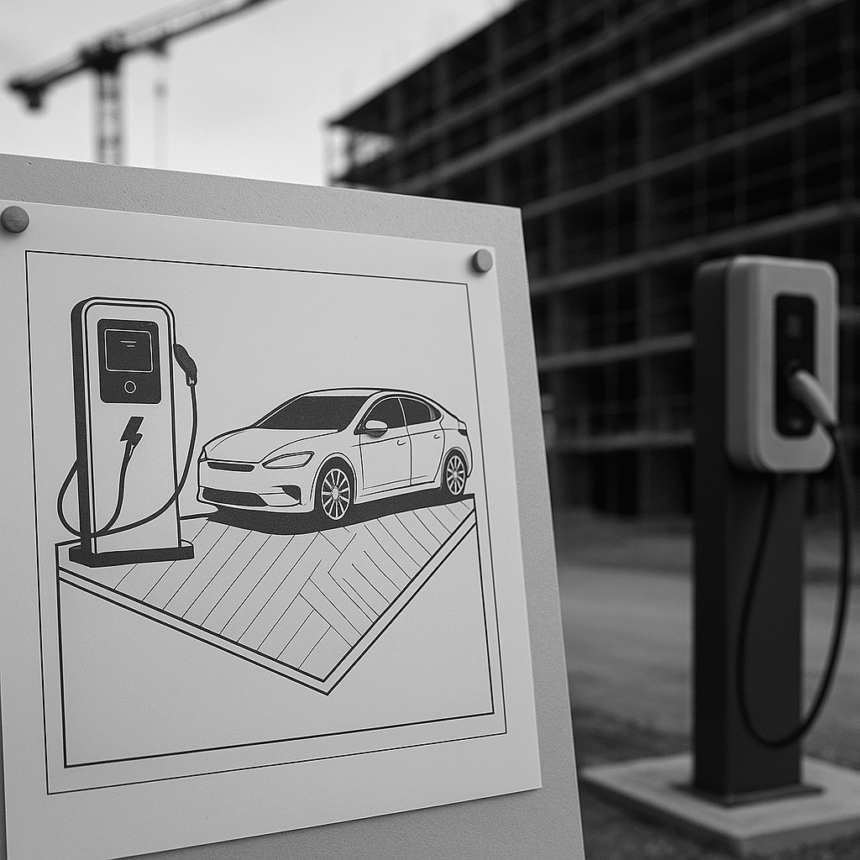How to Build an Electric Car Charging Station (Small-Scale Model)
The rising demand for electric vehicles (EVs) across the Middle East has opened the door for new entrants looking to build a small-scale EV charging station. If you’re a CEO or infrastructure provider planning to enter this growing sector, understanding how to build an electric car charging station efficiently and strategically is key to long-term viability.
This guide offers a step-by-step roadmap, from budget planning to final commissioning, specifically tailored for a single-site model.
Step 1: Budget Planning for a Single-Site Station
Before choosing hardware or partners, start with a clear budget range. A basic AC charging station (7–22 kW) can range between AED 20,000 to AED 50,000 per unit, depending on brand, software integration, and installation complexity.
Key Cost Elements:
- Charger unit (AC or DC)
- Installation and trenching
- Utility connections and metering
- Software/backend system (OCPP-compliant)
- Local permits or DEWA/ADDC application fees
Be sure to factor in maintenance and warranty support, as these can significantly impact the total cost of ownership.
Step 2: Hardware Selection Guide
Choosing the right charger type is critical. Most small-scale projects start with AC Level 2 chargers for locations like residential compounds, office buildings, or retail centers.
Charger Type Comparison:
- AC Charger (7–22 kW): Suitable for longer dwell time locations. Lower cost.
- DC Fast Charger (50–150 kW): Ideal for quick-turnover sites but requires heavy grid support and higher capital investment.
Consider the following when selecting hardware:
- OCPP compliance for backend interoperability
- Cable vs. socket models
- Weather protection (IP rating)
- Warranty and service SLA options
Step 3: Energy Supply and Cabling Tips
Once your charger is selected, determine how it will draw power. Grid connectivity in Dubai and Abu Dhabi requires coordination with DEWA or ADDC, respectively.
Power Supply Considerations:
- Coordinate with building owners or real estate developers if installing on private land.
- Plan for dedicated electrical panels and circuit breakers.
- Use certified contractors for low-voltage cabling and grounding.
Cable Route Planning:
- Choose shortest route with minimum civil works
- Ensure underground ducts are protected and compliant with local codes
- Consider future scalability (pre-lay conduits for more chargers)
Step 4: Sample Timeline from Concept to Commissioning
A small-scale station typically takes 4–12 weeks to complete, depending on site readiness and authority approvals.
Illustrative Timeline:
- Week 1–2: Site survey, budget approval, and stakeholder alignment
- Week 3–4: Equipment sourcing and DEWA/ADDC application
- Week 5–6: Installation and testing
- Week 7–8: Commissioning and activation
If you’re using a Charge Point Operator (CPO) as a partner, they may handle much of the process on your behalf, including network onboarding.
Optional: Add Value with Smart Features
Although optional, smart features like mobile app integration, remote diagnostics, and load management can help differentiate your site and attract higher-end EV drivers.
Look for vendors that offer:
- RFID access control or QR scanning
- Load balancing for multiple units
- Integration with property management systems (for commercial zones)
Final Thoughts: Think Long-Term
Launching a small-scale EV charging station is not just a tech decision—it’s a business move. Choosing OCPP-compliant hardware, planning your budget realistically, and following UAE-specific approval pathways will position your venture for smooth operations and scalability.
If you’re looking to scale from one location to many, this model can become your blueprint.



Leave a Reply